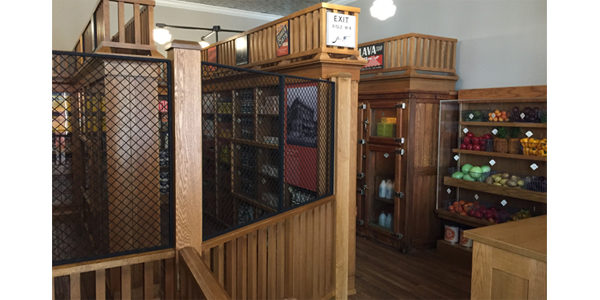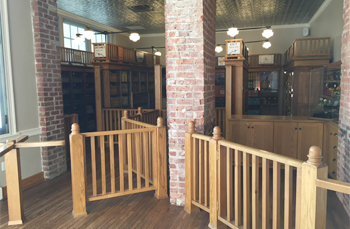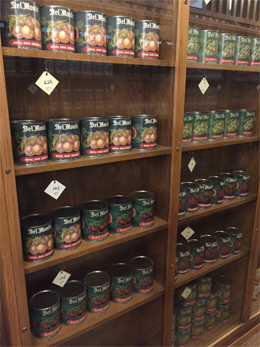Gotta get back in time

Often when I travel and have a few hours to kill, I will venture into a local museum. Recently, I visited The Pink Palace Museum in Memphis, Tenn.
Named for its pink Georgian stone façade, The Pink Palace was originally the home of Clarence Saunders, the founder of the Piggly Wiggly supermarket chain. Saunders is considered the developer of the modern self-service grocery store.
Prior to the founding of Piggly Wiggly, customers would hand their shopping lists to the grocer, who would collect the items from shelves behind the counter. Saunders realized he could save on labor costs if shoppers gathered their own orders. In 1916, he opened a new kind of grocery store in Memphis, the first Piggly Wiggly.

Customers visiting the first Piggly Wiggly store would enter through a turnstile and follow a single pathway that zigzagged past each row of shelves. The path ended at the checkout counter.
The Pink Palace has a replica of this first store, which features a turnstile entrance with a single pathway that zigzags past each row of shelves. Customers would pick up a basket and walk the entire serpentine path through the small shop, ending at the checkout counter. Among other advantages, this arrangement offered much more product variety than the typical grocery store of the day.
The concept was wildly successful, and by 1923, Piggly Wiggly had grown to more than 1,200 stores in 40 states. With customers doing the order picking, Saunders was able to pass on the savings in the form of low prices.
The grocery industry is a notoriously low-margin business that makes its profit on volume. When grocery moved to self-service, it greatly reduced its handling and labor needs. Aldi stores today take this cost-saving approach even further by having customers pack their own orders.

Shoppers at the first Piggly Wiggly gathered their own orders—a novelty at the time. This arrangement made it possible to offer much more product variety than previously, at lower prices.
Fast forward 100 years to the present. Several days ago, I was in the grocery section of my local Walmart. A worker holding a radio-frequency scanner was pushing a cart and hand picking several orders at a time for customer pickup (or possibly home delivery).
E-grocery sales are expected to hit $30 billion by 2023, accounting for up to 15 percent of all grocery purchases. However, in providing customer convenience, grocery distributors are taking a huge step back in efficiency. Is picking orders by hand really progress? While many stores charge a fee for click-and-collect services, those fees rarely cover actual order assembly costs. Someone has to pay the difference.
If grocers are going to continue down this e-path, they need solutions that provide similar efficiencies and labor savings to those found in the DC. It is time to once again reimagine how grocery stores look and operate, with automation as the key to providing efficient click-and-collect services.
Related Articles

Copyright ©2024. All Rights ReservedDesign, CMS, Hosting & Web Development :: ePublishing